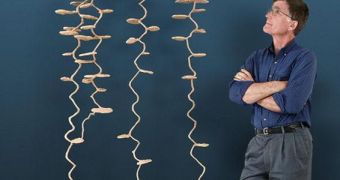A group of investigators at the University of Bristol, in the United Kingdom, argue in a new study that they were able to develop a new imaging technique, which enables them to use computer tomography (CT) in order to monitor how ants move and setup their colonies.
This approach allows for the creation of a four-dimensional (4D) image of how the insects go about constructing their nests, even in the absence of a master architectural plan. Even so, their metropolises are exceeded only by human settlements in complexity.
Many scientists consider ant colonies to be the most intricate structures in nature. Some of these nests can stretch for hundreds of meters, and swallow tons of concrete before their tunnels are fully covered. The underground cities are also organized in separate districts, each with specific services.
Biologists have always wanted to understand what is it about the ants, and their interactions with each other and their environment, that made the insects construct such mind-bogglingly complex structures without a master architect or blueprint.
The Bristol team used high-resolution CT scanning in order to find the answer to this question. The group included geologist Dr. Nicholas Minter, archaeologist Dr. Kate Robson Brown, and biologist professor Nigel Franks.
CT equipment was used to take repeated, 3D snapshots of the colonies as they were being constructed in time. By taking this route to monitoring the ants, researchers avoided the need to use plaster casts, which harm the colony, and can change the insects' natural behavior.
After conducting several surveys of the same nest, the team produced the first-ever 4D representation of an ant nest being built. Experts were puzzled to learn that sediment structures had an important effect on the overall nest architecture.
“Our results show that excavation is controlled by the density of ants and is also influenced by the structure of the sediment through which they tunnel. So, ant nest architecture is influenced by both social and environmental factors,” Dr. Robson Brown explains.
Details of the new discoveries, which were funded by the Leverhulme Trust, appear in a paper published in the latest issue of the Journal of the Royal Society Interface, the team reports. The paper is called “Morphogenesis of an extended phenotype: four-dimensional ant nest excavation.”

 14 DAY TRIAL //
14 DAY TRIAL //